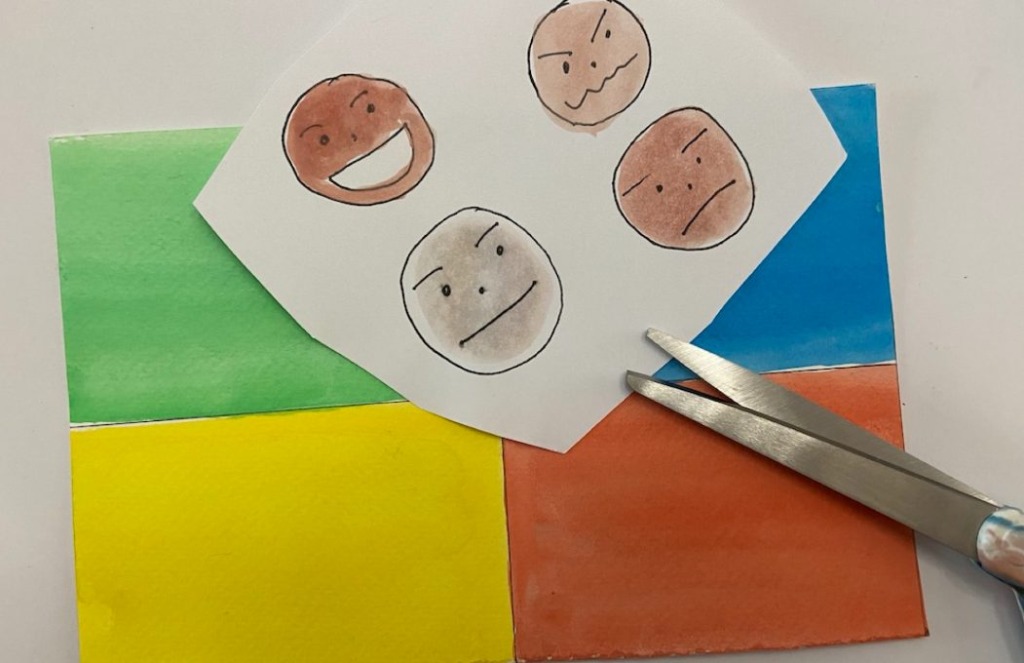How Art Helps Children Develop Emotional Intelligence


Art is more than just a fun pastime for children it is a powerful tool that nurtures emotional intelligence. Emotional intelligence (EQ) refers to the ability to recognize, understand, and manage emotions in oneself and others. Through artistic expression, children learn to navigate their feelings, develop empathy, and build essential social skills that benefit them throughout life.
Whether through painting, drawing, or sculpting, engaging in art offers children a safe and creative way to express their emotions. This article explores how art fosters emotional intelligence and why incorporating canvas art in a child’s environment can enhance their emotional growth.
The Connection Between Art and Emotional Intelligence
Children often struggle to express their emotions verbally, especially when they encounter complex or overwhelming feelings. Art provides an outlet for them to process these emotions in a non-verbal way. When children create, they tap into their emotions and channel them into colors, shapes, and forms. This act of expression helps them:
- Recognize and label emotions – Art allows children to explore their feelings, helping them distinguish between happiness, sadness, frustration, or excitement.
- Develop self-regulation – Creating art requires patience and focus, which enhances their ability to manage emotions.
- Build resilience – Making mistakes in art and finding ways to adapt fosters problem-solving and perseverance.
How Different Art Forms Support Emotional Growth
1. Drawing and Painting: Expressing Inner Feelings
Children who struggle to articulate their emotions can often express themselves through drawing and painting. By selecting specific colors or themes, they communicate their internal world without words. Parents and educators can use these artworks as conversation starters to understand a child’s emotional state.
2. Sculpting and Crafting: Encouraging Emotional Resilience
Working with materials like clay, fabric, or mixed media requires patience and problem-solving skills. If something doesn’t turn out as expected, children learn to adapt and adjust their approach, fostering emotional resilience and flexibility.
3. Storytelling Through Art: Building Empathy
Encouraging children to create artwork based on stories or personal experiences helps them see the world from different perspectives. This practice enhances empathy, a core component of emotional intelligence. Displaying canvas wall art that tells a story can also serve as inspiration for discussions about emotions and experiences.
The Role of Art in Emotional Communication
Art serves as an important bridge for communication, especially for children who have difficulty expressing their emotions verbally. When children create art:
- They develop confidence in sharing their feelings.
- Parents and educators can observe emotional cues through color choices and artistic themes.
- Art becomes a safe space for self-expression, reducing anxiety and stress.
Encouraging open-ended art projects, such as painting feelings on a blank canvas wall art, can provide valuable insights into a child’s emotional world.
Incorporating Art into Everyday Life for Emotional Development
To nurture emotional intelligence through art, parents, and educators can integrate artistic activities into daily routines. Here are some effective ways to do so:
1. Create an Art-Friendly Environment
Having a designated creative space at home or school, equipped with various art supplies, encourages children to explore their artistic side freely. Canvas art from Wikiart that reflects different emotions can also serve as inspiration.
2. Encourage Reflection on Artwork
After a child completes an artwork, ask open-ended questions such as:
- What do you feel when you look at this piece?
- What does this color mean to you?
- Can you tell a story about your artwork?
This practice helps children connect their emotions with their creations.
3. Use Art as a Coping Mechanism
During stressful situations, encourage children to turn to art as a way to express and release emotions. Providing them with a sketchbook or a small canvas art set allows them to create whenever they feel overwhelmed.
4. Explore Different Artists and Styles
Introducing children to famous artists and discussing their styles can broaden their emotional understanding. Many artists convey deep emotions through their work, and discussing these pieces can help children recognize and relate to different feelings.
Why Surrounding Children with Art Matters
The environment plays a significant role in shaping a child’s emotional well-being. A room filled with diverse artwork, including abstract pieces, nature-inspired art, or motivational canvas art, can evoke emotions and stimulate creativity. Exposure to various artistic styles encourages children to explore their own emotions more freely and develop a deeper appreciation for visual storytelling.
Conclusion
Art is a valuable tool for nurturing emotional intelligence in children. It helps them express their feelings, build empathy, and develop important social and emotional skills. By incorporating art into daily life whether through creative activities or surrounding children with inspiring canvas art parents and educators can support emotional growth in a meaningful way.
Encouraging children to create and appreciate art not only enhances their creative abilities but also equips them with lifelong emotional intelligence skills. So, whether it’s through a paintbrush, clay, or beautifully crafted canvas wall art, let art be a guiding force in a child’s emotional journey.
Last Updated: April 18, 2025
